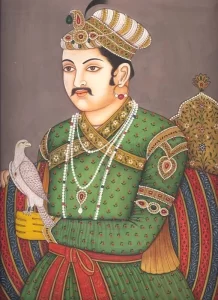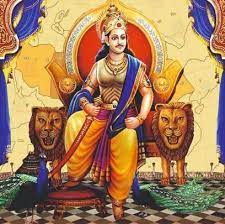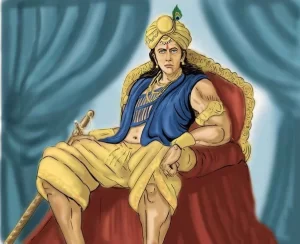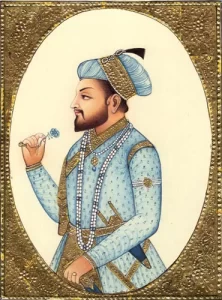TOP 7 MIRACLES IN THE WORLD
Top 7 Miracles in the world
1. The Miracle of the Sun

The Miracle of the Sun is a supposed wonderful 7 miracles in the world occasion seen by upwards of 100,000 individuals on 13 October 1917 in the Cova da Iria fields close to Fátima, Portugal. Those in participation had gathered to see what the Portuguese mainstream papers had been criticizing for quite a long time as the ludicrous case of three shepherd kids that a marvel planned to happen at high-early afternoon in the Cova da Iria on October 13, 1917. As per many observer articulations, after a defeat of downpour, the foreboding shadows broke and the sun showed up as an obscure, turning plate overhead.
It was supposed to be altogether less splendid than typical, and cast colorful lights across the scene, the shadows on the scene, individuals, and the encompassing mists.
The sun was then answered to have tilted towards the earth in a crisscross example, alarming a portion of those current who thought it implied the apocalypse. A few observers detailed that their already wet garments turned out to be “abruptly and totally dry.” Estimates of the quantity of witnesses range from 30,000-40,000 by Avelino de Almeida, composing for the Portuguese paper O Século, to 100,000, assessed by Dr. Joseph Garrett, teacher of inherent sciences at the University of Coimbra, both of whom were available that day.
The marvel was credited by adherents to Our Lady of Fátima, a nebulous vision of the Blessed Virgin Mary to three youthful shepherd youngsters in 1917, as having been anticipated by the three kids on 13 July, 19 August, and 13 September 1917.
The kids detailed that the Lady had guaranteed them that she would on 13 October uncover her character to them and give a supernatural occurrence “so that all might accept.” The occasion was authoritatively acknowledged as a wonder by the Roman Catholic Church on 13 October 1930 thats why its come in the list of 7 miracles in the world.
2. The Miracle of Lanciano

In the city of Lanciano, Italy, around A.D. 700, a Basilian priest and cleric was appointed to praise the Eucharistic penance in the Latin Rite in the little Church of St.Legontian. Generally celebrating in the Greek Rite and utilizing raised bread and having been instructed that unleavened bread was invalid matter for the Holy Sacrifice he was upset to be compelled to utilize unleavened bread and experienced difficulty accepting that the marvel of transubtantiation would occur with unleavened bread.
During the Mass, when he said the expressions of sanctification, he saw the bread change into live tissue and the wine change into live blood, which coagulated into five globules, sporadic and varying in shape and size thats why its come in the list of 7 miracles in the world. Different ministerial examinations have been directed upon the marvel, and the proof of the supernatural occurrence stays in Lanciano right up ’til today. In 1970-71, Professors from the University of Siena directed a logical examination concerning the supernatural occurrence.
They presumed that the flesh are human flesh. The Flesh is a heart complete in its fundamental design. The Flesh and the Blood have a similar blood classification, AB, which is additionally a similar blood classification found on the Shroud of Turin and any remaining Eucharistic Miracles thats why it comes in the list of 7 miracles in the world.
3. Tilma of Juan Diego

Saint Juan Diego Cuauhtlatoatzin was a native Mexican who detailed a nebulous vision of the Virgin Mary as Our Lady of Guadalupe in 1531. He essentially affected the spread of Catholic confidence inside Mexico. As per Juan Diego, he got back that evening to his uncle Juan Bernardino’s home and found him genuinely sick. The following morning December 12, Juan Diego chose not to meet with the Lady, but rather to observe a cleric who could direct the last customs to his perishing uncle.
Whenever he attempted to skirt around the Tepeyac slope, the Lady blocked him, guaranteed him his uncle would not kick the bucket, and requested that he climb the slope and assemble the blossoms he tracked down there. It was December when typically nothing blossoms neglected.
There he tracked down roses from the district of Castille in Spain, the previous home of Minister Zumárraga.
The Lady re-organized the roses cautiously inside the collapsed tilma that Juan Diego wore and told him not to open it before anybody but rather the diocesan. Whenever Juan Diego unfurled his tilma before the Bishop roses fell from his tilma, a symbol of Our Lady of Guadalupe was supernaturally dazzled on the fabric, pushing the diocesan to the edge of total collapse that’s why it comes in the list of 7 miracles in the world.
4. Joseph of Cupertino

Joseph of Cupertino is an Italian holy person. He was said to have been strikingly unclever, yet inclined to inexplicable levitation, and serious happy dreams that left him expanding. Thus, he is perceived as the supporter holy person of air explorers, pilots, individuals with psychological impediments, and feeble understudies. He was consecrated in 1767. On October 4, 1630, the town of Cupertino held a parade on the gala day of Saint Francis of Assisi.
Joseph was aiding the parade when he abruptly took off out of sight, where he remained drifting over the group. Whenever he plunged and acknowledged what had occurred, he turned out to be extremely humiliated that he escaped to his mom’s home and stowed away.
This was the first of many flights, which before long acquired him the moniker “The Flying Saint.” Joseph’s most popular flight supposedly happened during an ecclesiastical crowd before Pope Urban VIII.
Whenever he bowed down to kowtow to the Pope, he was unexpectedly loaded up with worship for the Pope and was lifted out of sight. He encountered euphorias and flights (seen by thousands) during his keep-going mass which was on the Feast of the Assumption 1663 thats why its come in the list of 7 miracles in the world.
5. Lourdes (1858)

The specters of Our Lady of Lourdes started on 11 February 1858, when Bernadette Soubirous, a 14-year old worker young lady from Lourdes conceded, when addressed by her mom, that she had seen a “woman” in the cavern of Massabielle, about a mile from the town, while she was gathering kindling with her sister and a companion. Comparable appearances of the “woman” occurred on seventeen further events that year.
During one of the phantoms, she was coordinated by the “woman” to burrow close to a stone and drink from the spring there – there was a little puddle of mud in the spot however as Bernadette delved in to it, an enormous spring showed up – this is the wellspring of the water in the cavern to which a large number of individuals run for inexplicable fixes consistently. The Lourdes Medical Bureau have pronounced 68 instances of peculiar fixed thats why its come in the list of 7 miracles in the world.
6. Statue in Akita

In 1973, Sister Agnes Katsuko Sasagawa in Akita, Japan had dreams of the Virgin Mary. On June 28, 1973, a cross-formed injury showed up within the left hand of Sr. Agnes. It drained plentifully and caused her much agony. On July 6, Sr. Agnes heard a voice coming from the sculpture of the Blessed Virgin Mary in the sanctuary where she was supplicating. The sculpture was cut from a solitary square of wood from a Katsura tree and is three feet tall. Around the same time, a couple of the sisters saw drops of blood moving from the sculpture’s right hand.
The injury in the sculpture’s hand stayed until September 29, when it vanished. On September 29, the day the injury on the sculpture vanished, the sisters saw the sculpture had now started to “sweat”, particularly on the temple and neck.
After two years on January 4, 1975, the sculpture of the Blessed Virgin started to sob. It kept on sobbing at spans for the following 6 years and eight months. It sobbed on 101 events. A logical examination of blood and tears from the resolution given by Professor Sagisaka of the staff of Legal Medicine of the University of Akita affirmed that blood, tears, and sweat are genuine human tears, sweat, and blood thats why its come in the list of 7 miracles in the world.
7. Therese Neumann (1896 – 1962)

It was a German Catholic spiritualist and stigmatic. On March 10, 1918, Therese Neumann was somewhat incapacitated in the wake of tumbling off a stool while taking care of a fire in her uncle’s horse shelter. She supported more falls and wounds during this period. After one specific fall in 1919, she lost a lot of her vision. Therese announced that her vision was completely reestablished on April 29, 1923 – the day Therese of Lisieux was exalted (the initial step to sainthood) in Rome. She said that on March 5, 1926, the principal Friday of Lent, an injury had shown up somewhat over her heart, however, she had kept quiet. Nonetheless, she detailed a dream of Jesus at Mount Olivet with three Apostles.
On Easter Sunday, she guaranteed a dream of the revival of Christ. For quite some time Fridays from that point onward, she expressed she was encountering the Passion of Christ, probably experiencing it in her own body alongside the entirety of his notable desolations. She particularly experienced the Passion on Good Fridays every year. By November 5, 1926, she showed nine injuries on her head as well as wounds on her back and shoulders (the greater part of which are apparent in the picture above).
As indicated by a few sources these injuries never mended or became contaminated and were found on her body at death. From the long periods of 1922 until her passing in 1962, Therese Neumann said she had polished off no food other than The Holy Eucharist, and to have smashed no water from 1926 until her demise. In July 1927 a clinical specialist and four Franciscan attendants kept a watch on her 24 hours per day for afourteen-dayy time frame thats why its come in the list of 7 miracles in the world.









